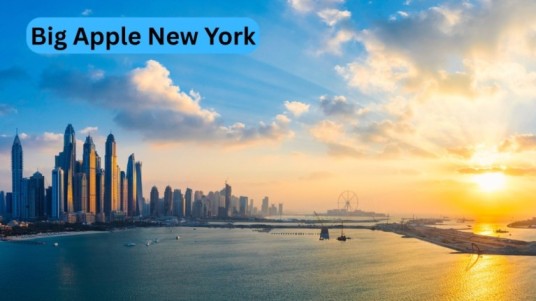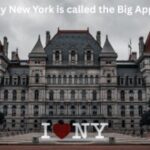Introduction: Why the Big Apple New York Captures the World’s Imagination
Few nicknames are as famous or as globally recognized as the Big Apple New York. Tourists, historians, artists, and dreamers all use this iconic name when referring to America’s most dynamic city. But why is New York City called the Big Apple? How did this quirky phrase transform into a worldwide symbol of opportunity, ambition, and excitement?

The story of the Big Apple New York is much more than a nickname. It is a cultural expression that represents dreams of success, the energy of the city that never sleeps, and the magic of places like Times Square, Broadway, and Central Park. In this article, we’ll uncover the history, hidden secrets, cultural significance, and must-see attractions that make the Big Apple an unforgettable destination for millions every year.
I. The Origins of “Big Apple New York”
The nickname Big Apple New York has an intriguing history. Many people assume it has always been associated with the city, but the term actually dates back to the 1920s.
The first major use of the phrase came from sports journalist John J. Fitz Gerald of the New York Morning Telegraph. Covering horse racing, he referred to New York City tracks as the “Big Apple” — the ultimate prize for jockeys and trainers. From this moment, the Big Apple New York symbolized winning, wealth, and prestige.
By the 1930s, jazz musicians adopted the phrase. For them, New York was the “Big Apple” — the place where every performer wanted to play, a city where dreams could come true. Jazz clubs, record labels, and touring musicians spread the phrase across America and beyond. By the mid-20th century, the Big Apple had become a cultural reference known to millions.
You can see this also:
- 10 Irresistible Reasons Your Next Air Transat Vacation Will Change Your Life Forever
- Best Travel Insurance for Seniors in the USA: 2025 Guide to Safe, Stress-Free Adventures
- 15 Best Beaches to Visit in the USA for an Unforgettable Coastal Escape
- “17 Jaw-Dropping and Budget-Friendly Affordable Honeymoon Destinations in the US You’ll Love”
- 10 Powerful Facts About Why NYC Is Called The Big Apple
- 10 Amazing Reasons Why New York So Popular Around the World
- What Are the Best Places to Visit in the USA 2025
- 10 Beautiful Reasons Why Fall Is the Best Time to Visit the U.S.
- What Are the Best Places to Visit in the USA in 2025?
- Why New York City Is a Must-Visit Destination in the United States: Top 10 Reasons You’ll Love It
II. Why the Nickname Stuck
So why did Big Apple New York survive while other nicknames faded? The answer lies in its powerful symbolism.
The apple is universally associated with something tempting, rewarding, and desirable. Calling New York the Big Apple created an image of the city as the ultimate prize — big, bold, and irresistible.
Tourists, artists, and businesses embraced it because it captured the essence of New York: opportunity, excitement, and ambition. During the 1970s, the city’s tourism board even launched a campaign called “I Love New York” that reinforced the nickname and brought it into modern branding. Today, no other name for New York carries the same emotional pull as Big Apple New York.
III. The Big Apple New York in Culture
The Big Apple New York has long been a cultural magnet. From movies and Broadway musicals to literature and pop music, the nickname appears in countless works of art.
Writers like F. Scott Fitzgerald, musicians like Duke Ellington, and filmmakers from Martin Scorsese to Woody Allen have all contributed to the cultural image of the Big Apple New York. For many immigrants arriving at Ellis Island in the 20th century, the Statue of Liberty and the skyline symbolized their first view of the “Big Apple” — the land of new beginnings.
The nickname is also part of everyday speech. Tourists buy T-shirts, mugs, and souvenirs with Big Apple New York written across them. Social media influencers use the hashtag to share photos of their trips, keeping the phrase alive in the digital age.
IV. Big Apple New York Attractions You Can’t Miss
To truly experience the Big Apple New York, you need to explore its iconic landmarks. These attractions represent both the history and modern energy of the city.
- Times Square – Known as “the crossroads of the world,” Times Square dazzles with neon lights, Broadway theaters, and energy that embodies the Big Apple spirit.
- Central Park – A 843-acre oasis where locals jog, families picnic, and visitors stroll. It’s the heart of the Big Apple New York experience.
- Broadway – The global capital of theater. Every dreamer who comes to the city dreams of attending or starring in a Broadway show.
- Statue of Liberty – The symbol of freedom and opportunity for millions of immigrants, and an essential part of the Big Apple story.
- Wall Street – The financial powerhouse of the world, shaping markets and making fortunes.
- Empire State Building – A breathtaking view of the Big Apple New York skyline from its observation decks.
- Brooklyn Bridge – A historic architectural marvel connecting Manhattan and Brooklyn, offering iconic photo opportunities.
Every visitor who steps into these places experiences firsthand what makes Big Apple New York such a magnetic destination.
- “25 Cheap Places to Honeymoon on a Budget in 2025 | Romantic & Affordable Destinations for Newlyweds”
- Why Visit the USA? best Reasons to Travel to America in 2025
- 25 Cheap and Best Places for Honeymoon You’ll Love in 2025
- Cheap Honeymoon Resorts in the USA 2025: Romantic Getaways That Feel Like a Dream Without the Big Bill
- New York City Big Apple Origin: The History of the Nickname 25
- Things to Do in New York City: Your Ultimate Guide to the Big Apple 25
- The Best Travel Destinations for Digital Nomads in 2025
- “Top 10 Ways to Save Money on Travel in 2025 – Budget Travel Tips”
- Top 11 Best Places to Visit in North America: Your Ultimate Travel Guide
V. Experiencing the Big Apple New York Like a Local
Tourists often stick to famous landmarks, but the real flavor of Big Apple New York comes from living like a local.
Take a walking tour through Central Park, as many travel companies offer guided explorations that reveal hidden gems and history. Wander through neighborhoods like Greenwich Village, Harlem, or Williamsburg, where unique cultures, cuisines, and traditions flourish.
Food is another way to taste the Big Apple New York experience. From world-class fine dining to classic New York pizza, bagels, and hot dogs, every meal tells part of the city’s story. Nightlife adds another layer — rooftop bars, underground jazz clubs, and late-night diners keep the city alive 24/7.
VI. The Big Apple in Modern Culture
In today’s digital age, the Big Apple New York nickname continues to thrive. Tourism campaigns still use it, influencers hashtag it, and global travelers recognize it instantly.
The phrase has become part of branding not just for tourism but also for businesses, music, and entertainment. When someone says “the Big Apple,” no explanation is needed — everyone knows they mean New York City.
Even challenges like rising living costs or changing demographics haven’t diminished the global appeal of the Big Apple New York. Instead, the nickname has become stronger, symbolizing resilience, diversity, and constant reinvention.
VII. Secrets Behind the Big Apple Nickname
While many know the popular story, there are lesser-known facts about how Big Apple New York became iconic:
- In the 1970s, the nickname was nearly forgotten until a tourism revival campaign saved it.
- The nickname wasn’t popular among locals at first — it was more of an outsider’s phrase.
- Jazz musicians, more than journalists, spread the phrase worldwide.
These little-known details make the story of Big Apple New York even richer and more fascinating.
VIII. Why Travelers Love the Big Apple New York
Visitors from around the globe continue to flock to the Big Apple New York for several reasons:
- Diversity – With over 180 nationalities represented, it is one of the most multicultural cities in the world.
- Energy – From Wall Street to Broadway, the city’s nonstop pace inspires travelers.
- Landmarks – Nowhere else in the world offers the same concentration of globally recognized sights.
- Opportunities – Whether career, art, or education, the city represents limitless possibilities.
For many, stepping into the Big Apple New York feels like stepping into the center of the world.
You can see this also;
- Comprehensive Travel Insurance: What’s Covered and Why It Matters 2025
- Medical Travel Insurance: Your Safety Net for International Trips 2025
- Affordable Travel Insurance 2025: How to Protect Your Trip on a Budget
- The Best Travel Insurance for 2025: Top Plans Revealed
- Best Budget Honeymoon Destinations: Affordable Romance Around the Globe 2025
- Travel Insurance in 2025: best Trends to Watch
IX. Tips for Exploring the Big Apple New York
- Plan ahead – The city is massive; prioritize what matters most.
- Use public transport – The subway is the fastest way to experience the city.
- Book tours – Walking tours in Central Park or historical neighborhoods enrich the experience.
- Balance tourist spots and hidden gems – See Times Square, but also explore local neighborhoods.
- Stay flexible – The beauty of the Big Apple New York is discovering surprises around every corner.
Conclusion: The Timeless Magic of the Big Apple New York
The story of Big Apple New York is one of resilience, culture, and unforgettable energy. From its roots in horse racing journalism to its global recognition through jazz, tourism, and popular culture, the nickname captures the very essence of New York City.
Visiting the Big Apple New York isn’t just about checking landmarks off a list. It’s about experiencing a living, breathing city that symbolizes dreams, diversity, and opportunity. Whether you’re exploring Central Park, gazing at the skyline, or simply savoring a slice of pizza, you are living a piece of the “Big Apple” story.
No matter how the world changes, the Big Apple New York will remain a timeless icon that continues to amaze and inspire millions across the globe. Wikipedia








